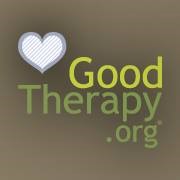Nonverbal Communication
 Nonverbal communication is the act of conveying a thought, feeling, or idea through physical gestures, posture, and facial expressions. A study conducted at UCLA found a majority of communication to be nonverbal, although the study’s exact statistics—which showed only 7% of any message to be relayed through words, 38% through vocal elements such as tone, and 55% through nonverbal elements such as posture and gesture—are often disputed.
Nonverbal communication is the act of conveying a thought, feeling, or idea through physical gestures, posture, and facial expressions. A study conducted at UCLA found a majority of communication to be nonverbal, although the study’s exact statistics—which showed only 7% of any message to be relayed through words, 38% through vocal elements such as tone, and 55% through nonverbal elements such as posture and gesture—are often disputed.
Understanding Nonverbal Communication
Nonverbal communication plays a significant role in our lives, as it can improve a person’s ability to relate, engage, and establish meaningful interactions in everyday life. A better understanding of this type of communication may lead people to develop stronger relationships with others. Often referred to as body language, nonverbal communication can take many forms and may be interpreted in multiple ways by different people, especially across cultures. Even a lack of such nonverbal cues can be meaningful and, in itself, a form of nonverbal communication.
Each movement and combination of movements of the body—such as shifts in posture, direction of the eyes, gestures of the limbs, and expressions on the face—provide signals to others. These cues may be subtle or obvious, and they can be contradictory: A person might say one thing while body language conveys an entirely different message. This might be especially true when a person is not telling the truth. Because nonverbal communication is often instinctive and typically not easy to fake, it is generally more indicative of a person’s true feelings.
Types of Nonverbal Communication
Forms of nonverbal communication are many and varied and can provide extensive insight into a person’s thoughts and/or feelings. Forms of nonverbal communication can be categorized to better understand their place in everyday interactions:- Gestures include motion of the head or limbs.
- Posture refers to both the position of the body by itself and in relation to others.
- Body movements may include any motion of the body.
- Eye contact and movements are the direction and focus of a person’s eyes.
- Tone of voice is the range of pitch in the voice that may communicate something other than the words being spoken. For example, sarcasm may give an individual’s words an entirely different meaning.
- Facial expressions refer to any movement and changes of the facial composition.
Nonverbal communication is often used in conjunction with verbal communication to repeat, emphasize, support, or contradict a verbal message, or to serve in the place of a verbal message.
Role of Nonverbal Communication in Relationships
An individual’s nonverbal cues might be more easily read by a close friend, partner, or family member. In close relationships, this deeper understanding on a nonverbal level might facilitate greater closeness and strengthen bonds, especially when it complements what is actually being said by a friend or by one partner in a relationship.
However, when something does not feel right, it may be more difficult for people to hide things from those they are close to, and attempts to do so may lead to miscommunication or conflict in the relationship. Because nonverbal communication is often unconscious, the way individuals communicate nonverbally may provide the first indication of an underlying issue not readily apparent in the relationship.
Nonverbal Communication in Therapy
Since nonverbal communication is, in general, essential to one’s ability to navigate social situations and interact with others and the environment, it makes sense that nonverbal communication can be a powerful source of insight in therapy. A counselor who is attuned to a person’s nonverbal expressions, while also taking in the words actually spoken by the person, might be more easily able to recognize when a person’s body language and speech do not match. Or the counselor may learn more from a person’s gestures than from the words being spoken. These kinds of cues may help the counselor and the person in therapy identify and access deeper emotional issues for which the person may not be consciously aware.
Drawing attention to a person’s nonverbal forms of communication and pointing out possible contradictions between the person’s expressed words and what is conveyed without words can also help a person increase awareness of how nonverbal communication is used in personal interactions.
Somatic experiencing, a type of therapy used to help treat the effects of trauma, takes into account the body language and physical responses of the person in treatment as the therapist introduces a small amount of traumatic material. The therapist reads nonverbal cues in order to assess the individual’s reaction.
In body-mind psychotherapy, the therapist measures an individual’s breath, sounds, and movements in order to find counterproductive behaviors and help the individual develop new ones that have a more positive effect.
Cultural Differences in Nonverbal Communication
Certain forms of nonverbal communication have different meanings in different cultures. For example, a gesture or motion that means one thing to people in the United States may mean something entirely different in Japan. Whereas an American is likely to point with an index finger, a Japanese person will more likely gesture with a hand, as pointing with an index finger is considered to be rude in many Asian cultures.
An important cultural difference when it comes to nonverbal communication is the display of emotion: Some cultures are more restrained than others and refrain from excessive displays of emotion in public or at all. Some cultures may also suppress facial emotion, believing an animated face to show a lack of control over one’s emotions.
Eye contact is another aspect of nonverbal communication that differs across cultures. In the United States, direct eye contact is generally considered to be a sign of trustworthiness and interest in an individual’s words. However, in some instances, a prolonged gaze may be considered by some to be a sign of sexual interest or attraction. In countries such as Japan, eye contact is generally avoided, as direct eye contact may be considered to be disrespectful. Yet in Arabic cultures, the opposite is true: eye contact is believed to show interest and honesty.
Tips for Improving Nonverbal Communication
A person’s mindfulness may help increase understanding of personal nonverbal communication as well as the communication styles of others. Bringing oneself to the present and attending to facial expressions or posture can enhance self-awareness and may help one communicate more effectively with others. For example, while talking, a person might actively think about gestures, tone of voice, eye contact, and body movement and take into account the other person’s reaction to these aspects of communication.
Stress also plays an important role in nonverbal communication. Individuals who are stressed tend to misread people more easily and may send out verbal signals that confuse others. Managing stress well can improve verbal communication and relationships. Maintaining an awareness of one’s emotions and those of others is also important in recognizing and understanding another person’s nonverbal cues.
People who feel often misunderstood or distanced from others may find it helpful to ask a close friend or loved one how they come across when communicating. When nonverbal communication is often incongruent with spoken words, others may not be sure of intentions and may find it difficult to have faith in what a person is saying. An individual may also nonverbally convey a particular emotion others find off-putting, such as a sense of judgment or aggression. This may not come across in the individual’s spoken words, and individuals may be unaware of the message being sent by the nonverbal cues. Therefore, assessing the reactions of others and opening lines of communication can provide insight into ways to better align verbal and nonverbal communication.
References:
- Foley, G. N., & Gentile, J. P. (2010). Nonverbal communication in psychotherapy. Psychiatry (Edgmont), 7(6), 38.
- How much of communication is really nonverbal? (n.d.). Retrieved from http://www.nonverbalgroup.com/2011/08/how-much-of-communication-is-really-nonverbal.
- Owen, S. (2013). Verbal and Non-Verbal Communication – Impact on Relationships. Huffington Post. Retrieved from http://www.huffingtonpost.co.uk/sam-owen/verbal-and-non-verbal-communication_b_2485864.html.
- Sanders, A. (2014, January 22). How Does Nonverbal Communication Affect Relationships? Retrieved from http://www.livestrong.com/article/123418-nonverbal-communication-affect-relationships.
- Segal, J., Smith, M., Boose, G., & Jaffe, J. (2015). Nonverbal Communication. Retrieved from http://www.helpguide.org/articles/relationships/nonverbal-communication.htm.
- Tidwell, C. (n.d.). Non-Verbal Communication Modes. Retrieved from http://www.andrews.edu/~tidwell/bsad560/NonVerbal.html.
Last Updated: 02-7-2020
- 12 comments
- Leave a Comment
-

rajashekar
July 18th, 2016 at 3:31 AMhello sir, this is rajashekar, age 24. I am unable to speak to others in a good manner as i can not maintain eye contact with person speaking to and my facial expressions are very bad. Others may consider me as rude. Sir please let me know if there is any way to improve facial expression and eye contact. Is there an treatment for this?
-

Umair
November 18th, 2016 at 11:00 PMI don’t see any reply to your comment, so i am replying.
A long time ago I suffered the same.
I got help from talking face to face with myself in the mirror. Maintain eye contact.
Don’t judge the person you see in the mirror, its just you. Instead, help the person you see in the mirror to get better. In return, you will get better. You are your best friend. -

lillymarie
October 14th, 2016 at 7:03 AMExcellent results thanks very much
-

moses
April 24th, 2017 at 12:08 AMI admire to be a teacher counselor
-

Rick
June 15th, 2018 at 10:53 AMI enjoyed your post on Nonverbal Communications; it provided a great basic understanding of some nonverbal behaviors, and explained the importance of congruency when it comes to matching verbal and nonverbal messages. I also found the section about how nonverbal communication is used in therapy interesting. Do you believe that revealing a therapy patient’s incongruent nonverbal behavior with their message would make them more likely to reveal their true thoughts, or more likely to adapt their nonverbal signals in an attempt to mask their true feelings?
-

Caron
February 24th, 2019 at 9:45 AMI’ve enjoyed reading the article on non-verbal communication. I would like to footnote a few of the findings but find no distinct author. Is there anyone I can communicate with in this regard
-

The GoodTherapy.org Team
February 24th, 2019 at 5:08 PMHi Caron,
Thank you for visiting our site. I’m glad to hear you have found it resourceful. There is no named author — the author of this page is simply “GoodTherapy.” I hope this is helpful :).
Kind regards,
The GoodTherapy Team -

Abigail S
May 3rd, 2020 at 11:01 PMYes, I agree, I’m referencing and I need the author of this article. please provide that on the page somewhere. thank you.
-

LaurenGT
May 4th, 2020 at 9:38 AMI’m happy to hear you’re finding our site to be a helpful resource! There is no named author — the author of this page is simply “GoodTherapy.” I would recommend asking your professor or faculty how they would like you to cite a website with no named author.
-

a
May 20th, 2020 at 7:31 PMExplain about how non verbal communication helps in expressing your mood and mindset????
this article is incomplete everything has given is perfect but lack to the point of view. -

Ashwani Pal
July 2nd, 2021 at 9:09 PM7(B)
-

Ariella
July 27th, 2021 at 7:46 AMamazing website my teacher and my friends also liked it
Leave a Comment
By commenting you acknowledge acceptance of GoodTherapy.org's Terms and Conditions of Use.
